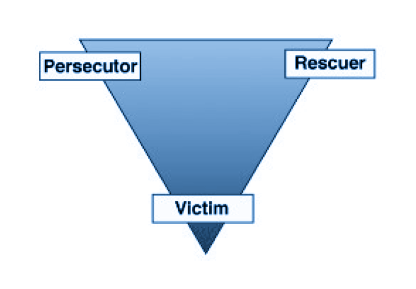Servant leadership is about making a difference through a mindful and helpful perspective. Servant leaders often attract criticism, but their motivation to do what is right and to help their team and organisation cannot be questioned.
A Servant leader is humble, not arrogant. They do not seek personal recognition and get a great deal of satisfaction from seeing others succeed with their help. Servant leaders will push in all directions, resolutely insisting on significant change that helps their people achieve great results. They are brave and not afraid to express opinions or to surface dysfunctions that are often uncomfortable to confront.
Many leaders find it difficult to transition from the power and authority that comes with their role in a hierarchical, command-and-control organisation. They cannot yet see themselves as servant leaders, or indeed trust their staff enough to devolve responsibility and support them as they grow into their own new roles. Traditional leaders have nothing to fear and everything to gain from adopting a value-creation, trust-based servant leadership approach.
What is Leadership?
To actually pinpoint what leadership itself is though, is difficult. So much is written about it, yet there is no single unversally acknowledged description of what a leader is or does. Leadership comes in many forms and you know it when you see it, usually because change, on a micro or macro scale, is happening.
According to Peter Drucker, the world's most renowned management thought leader:
The only definition of a leader is someone who has followers.
By this definition, a Leader is someone who garners a following. This is done by earning respect, empowering others and using this as a basis for turning an idea into a reality. Some traits of servant leaders are:
- Careful Listening - understand every team member's goals and problems
- Empathy - understand others and don’t force people into unsuitable activities
- Awareness - of self and others
- Persuasion - engagement and growing willingness
- Ideation - ensuring the right goals are set, with correct actions in pursuit of them
- Foresight - wisdom and experience
- Commitment - to their people’s success, growth and development
- Ability - to build a community, or start a movement.
Servant leaders work towards minimising or removing systemic dysfunctions through selflessly helping. This sound admirable, and it’s also very difficult to do and requires the leader to have exceptional people skills at all levels. Putting yourself out there for the greater good is the sign of a servant leader. Taking the pain away from the team, taking the criticism when things go wrong, winning a following and helping the team to find great ways to excel.
Servant leadership is hardly new. In fact, Lao Tsu in c550 BC made the following observation of leadership, which holds true today:
Go to the people. Live amongst them. Start with what they have. Build on what they know. And when the deed is done - the Mission accomplished, of the best leaders, the people will say "We have done it ourselves".
No ivory towers, or diktats from the leaders. The focus is on building strengths and capabilities to enable the team to fulfil a mission. This is best achieved by building on what the team already know, and dealing with the ineffectiveness that manifests itself through dysfunctional personal interactions.
In the classic business book The Five Dysfunctions of a Team by Patrick Lencioni, these are identified as follows:
- Absence of trust—unwilling to be seen to be vulnerable
- Fear of conflict—promoting artificial harmony over constructive heartfelt debate
- Lack of commitment—lack of or feigned buy-in for group decisions creates ambiguity throughout the organisation
- Avoidance of accountability—Not willing to point out and discuss counterproductive behaviour which produces low standards.
- Inattention to results—focusing on personal success, status and ego before team success.
There are several challenges that servant leaders must overcome. Servant leadership is not for the faint of heart, despite some people's perception that it is ‘soft’ and ‘indirect’. It takes a real strength of character and solid support network for the servant keader to deliver results.
Criticisms and realities of Servant Leadership
Criticism: Servant leadership is a false premise. Managers serve the primary purpose of representing the interests of owners and top management, not employees.
Reality: Servant leaders are in themselves followers of the next higher agenda in the company's strategy. They identify gaps that hinder fulfilment and compel their teams to address them, helping and supporting in any way that they can. Servant leaders do serve the primary purpose of owners and top management but in doing so deal with the practicalities around the specific piece they have been charged with, by putting the needs of the team first and addressing them.
Criticism: Lack of Authority. Servant leadership minimises the authority of the manager and the overall management function in the business. When employees see their manager catering to their needs in an extreme manner, they are less likely to view them as an authoritative figure.
Reality: A good servant leader is not afraid to be authoritative. The servant leader is notably a leader first, but one who uses a serving approach to achieve a result. The servant leader will work hard to assess the current challenges, promote a vision of the future, engage the team, other managers and superiors.
Criticism: It Demotivates. Servant leaders are constantly stepping into to fix things or to do the work of others, training the team to sit back and exert less effort in producing quality and put less thought into resolving issues or conflicts.
Reality: This opinion is fair, but as this article argues, good servant leadership isn’t about swooping in and constantly fighting fires. It’s about putting the team and their needs before your own. Notably, if you aren’t motivated by your assigned mission, you cannot lead a team well and will be unable to capture the benefits of this style of leadership.
Criticism: Limits Vision. Leaders are distinct from regular employees by their role in developing a vision and providing direction. Any manager needs to have some level of detachment from their employees so that they can explore new opportunities, brainstorm ideas, resolve problems and formulate a picture on where their department, store or business is headed. Only by having this separation from employees can managers focus on vision and then step in to articulate the vision by providing direction to employees.
Reality: The servant leader has a laser sharp focus on the vision. They will work to understand their teams’ ability to execute that vision, then develop the skills needed to close the gap. This is despite top-down demands for teams to ‘do better’. A leader of any type must know what better looks like and how to get there. Detachment from the team is detachment from execution, and this is never a good thing. Direction is provided constantly in servant leadership, otherwise, reality is often merely wandering around looking for fires to put out.
Servant leaders and the Drama Triangle
In Stephen Karpman’s Drama Triangle - a social model of human interaction - criticism or, as it’s called in the model, persecution, the Persecutor is one of the several behaviours that appear in dysfunctional environments. The other roles, Victim, and Rescuer are also prevalent.
When dysfunction exists people adopt one of these roles. One of the biggest pitfalls of servant leadership is blindly serving in Rescuer mode without challenging the team. This is a fast way to disempower the team, reduce results and dilute accountability.

Solving problems too often keeps a person or a team in the Victim corner. A servant leader must serve by identifying and taking the correct course of action to get a sustainable result over time. Action may include making introductions, finding and sharing useful information, facilitation, coaching, and, when required, a sharp retort.
Servant leaders must reduce conflict and minimise dysfunction, but not at all costs. Keeping everyone happy means letting people exist in their comfort zone. Keeping people happy is a widely presented criticism of servant leadership, but that view is inaccurate. A good servant leader will find ways to challenge and develop the team, building on strengths and bolstering weaknesses. At times what is good for the team isn't always pleasant to hear, and the challenge for the servant leader is to keep teams motivated whilst ensuring honesty about its performance.
Servant leadership is true leadership
Servant leadership is hard and requires self-belief, tenacity and self-direction. It’s about being a contrarian, sometimes a troublemaker, and doing thing differently to accepted practice. They may be criticised by people who have established strong beliefs about the nature of leadership, have the wrong understanding of what servant leadership is, or who don’t consider helping people to be a worthy pursuit. Servant leadership is not about being 'soft', which is an often-cited perception. It requires resilience, strength and firmness with peers. Somewhat unfairly, a soft reputation, whilst never true, may be detrimental when dealing with peers at the same level, or with the 'big personalities' in the upper management echelons.
Like any management style, successful servan leadership depends on the personal traits of the person themselves. A good leader knows their own strengths and weaknesses, is self-aware and uses an appropriate approach to get the best result in a given context. Servant leadership is a long-term play that builds movements and motivates teams. If you wish to develop servant leadership don't adopt a style which is not right for you, but do make efforts to support your team and build momentum through traits that work.
Servant leadership is a powerful addition to your personal leadership style mix. If you can blend authoritative leadership, with the right amount of democracy and coaching, and underpin it all using humble servant leadership then you will become a popular and effective leader.
Digital transformation requires true leadership. If you can lead by example and motivate people, in a way that elevates and inspires your team and others then you will have followers.
